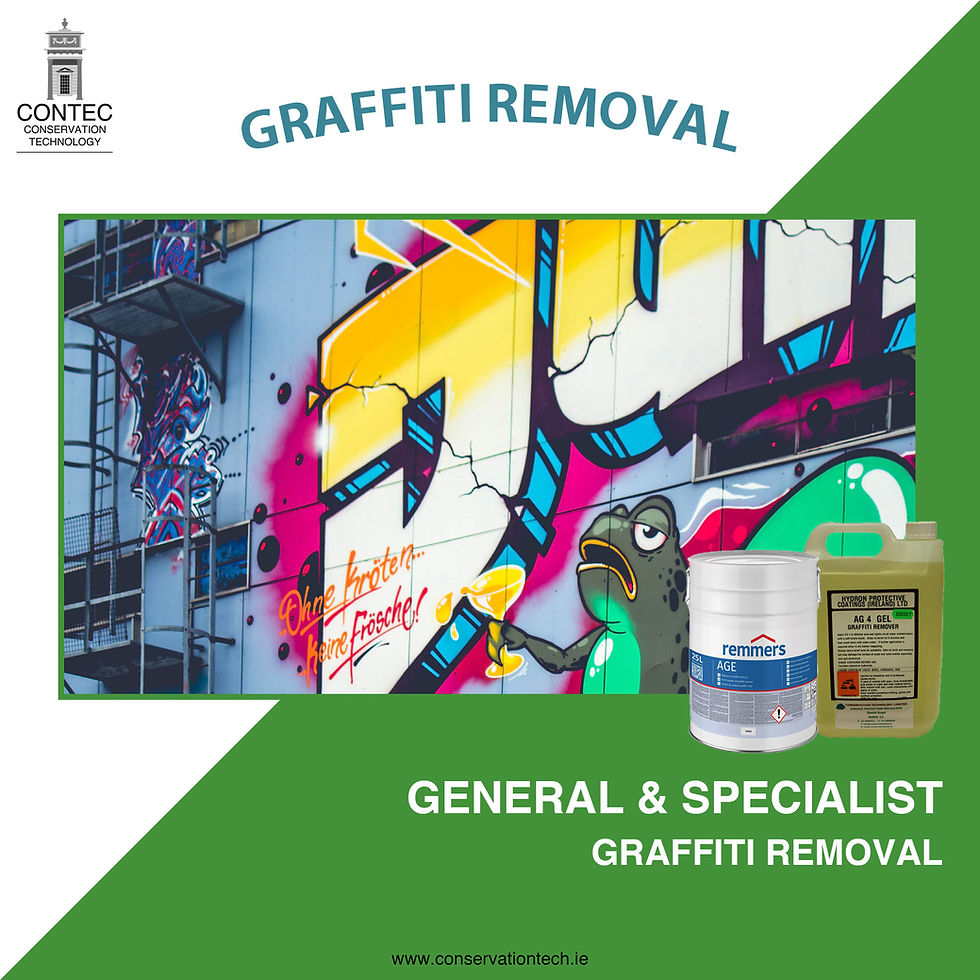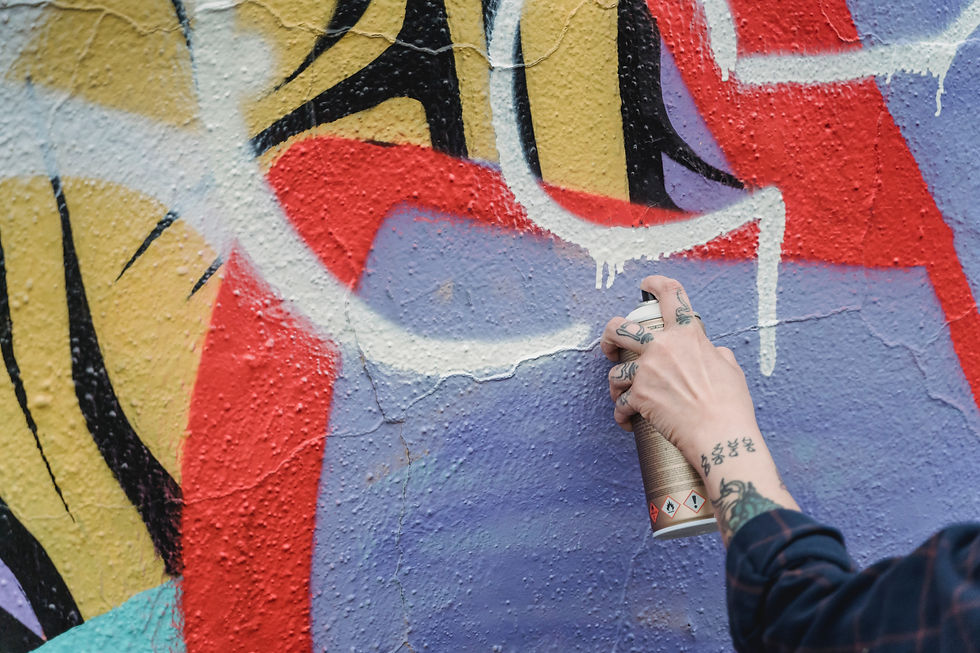Graffiti Removal
- Conservation Technology
- Jul 7, 2023
- 3 min read
General Guide to Chemical Graffiti Removal

What is a Chemcial Graffiti Remover?
A chemical graffiti remover is a specialized product designed to effectively remove graffiti from various surfaces. It typically contains a combination of solvents, detergents, or alkaline cleaners that work to dissolve or break down the graffiti materials, such as paint, ink, crayon, lipstick, markers and others allowing them to be easily removed.
The specific composition of a chemical graffiti remover can vary depending on the brand and intended use. However, the main purpose of these products is to make the removal process easier by breaking down the graffiti without causing significant damage to the underlying surface.

Here's a brief explanation of how a chemical graffiti remover works:
Solvents: Graffiti removers often contain solvents such as acetone, methylated spirits, or paint thinners. These solvents are effective at dissolving various types of paints, markers, and inks. When applied to the graffiti, the solvents penetrate the layers and soften the graffiti material, making it easier to remove.
Detergents: Many graffiti removers also incorporate detergents or surfactants that help break down and emulsify the graffiti pigments or dyes. These detergents aid in the removal process by loosening the graffiti particles and facilitating their removal from the surface.
Alkaline cleaners: Some graffiti removers use alkaline-based cleaners containing substances like sodium hydroxide or potassium hydroxide. These alkaline cleaners are effective at breaking down graffiti on porous surfaces, such as concrete or brick. The alkaline properties help dissolve and lift the graffiti material from the surface.
Overall, a chemical graffiti remover combines various active ingredients to chemically break down the graffiti and make it easier to remove. It's important to note that different types of graffiti removers are available for specific surfaces, such as painted walls, metal, glass, or porous surfaces. Always follow the instructions provided by the manufacturer for optimal results and to prevent any potential damage to the surface being treated.

General Guide to Removing Graffiti
Removing graffiti can be a challenging task, but with the right approach and chemicals, it is possible to effectively remove graffiti from various surfaces. Here's a general guide to removing graffiti using chemicals:
Evaluate the surface: Determine the type of surface that has been vandalized with graffiti. Different surfaces require different approaches and chemicals for removal. Common surfaces include concrete walls, brick walls, metal surfaces, glass, and plastic.
Safety precautions: Before you begin, ensure you have the necessary safety equipment, including gloves, goggles, and a face mask, to protect yourself from any potentially harmful chemicals.
Test the chemical: Before applying any chemical to the surface, perform a small test on an inconspicuous area to ensure it doesn't cause damage or discoloration. This step is crucial, as some surfaces may be sensitive to certain chemicals.
Choose an appropriate chemical: The choice of chemical depends on the type of graffiti and the surface. Our range of graffiti removers will cover most substrates. See our range of graffiti removers here
Use a scrub brush: For stubborn graffiti, use a nylon scrub brush or a stiff-bristled brush to agitate the surface after applying the chemical. This helps loosen the aerosol paint or marker ink from the surface.
Repeat the process if necessary: In some cases, multiple applications may be required to completely remove the graffiti. Be patient and repeat the steps until the graffiti is gone.
Rinse and clean: Once the graffiti is removed, rinse the area with clean water to remove any remaining chemical residue. Wipe or wash the surface with a mild detergent to ensure it's clean and free from any residual chemicals.
Optional: For very stubborn stains an graffiti shadows, a product called Shadow Lifter (SL1) can be used to remover deep graffiti stains.
Remember, it's essential to follow the instructions on the chemical products you use and take necessary safety precautions. In some cases, seeking professional help or contacting local authorities may be necessary, especially for valuable or sensitive surfaces.
See our range of graffiti removers below:




Comments